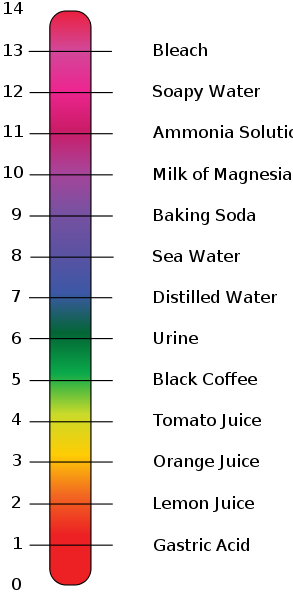What is Acids and Bases? | Types, Definition, Structure, Function & Facts
What is Acids and Bases?
Acids and bases are two special types of chemicals. Almost all liquids are acids or bases to some degree. Whether a liquid is an acid or a base depends on the type of ions it contains. If it contains a lot of hydrogen ions then it is an acid. If it contains many hydroxide ions, it is a base.
pH Scale
Scientists use the pH scale to measure how acidic or basic a liquid is. The pH is a number between 0 and 14. 0 to 7 is acidic, with 0 being the strongest. From 7 to 14 are the bases, with 14 being the strongest base. If a liquid has a pH of 7, it is neutral. It will be like distilled water.
Get Free Counseling
Strong Acids and Bases
Acids with a low pH around 1 are very reactive and can be dangerous. The same is true for bases with a pH close to 13. Chemists use strong acids and bases to achieve chemical reactions in the laboratory. While they can be dangerous, these powerful chemicals can also be helpful to us.
Acids and Bases in Nature
There are many strong acids and bases found in nature. Some of them are dangerous and are used as poisons by insects and animals. Some are useful. Many plants contain acids and bases in their leaves, seeds, or even sap. Citrus fruits like lemons and oranges contain citric acid in their juice. That’s what makes lemons so sour.
Acids and Bases in our Bodies
Our bodies also use acids and bases. Our stomach uses hydrochloric acid to help digest food. This strong acid also kills bacteria and keeps us from getting sick. Our muscles produce lactic acid when we exercise. In addition, our pancreas uses a base called alkali to aid in digestion. These are just a few examples of how the chemistry of bases and acids helps our bodies function.
Other Uses
Science and technology make good use of acids and bases. Car batteries use a strong acid called sulfuric acid. The chemical reactions between the acid and the lead plates in the battery help generate electricity to start the car. They are also used in many household cleaning products, baking soda and as a fertilizer for plants.
Interesting Facts about Acids and Bases
Acids and bases can help neutralize each other.
Acids turn litmus paper red, bases turn litmus paper blue.
Solid bases can be slippery and viscous.
Acids have a sour taste, bases have a bitter taste.
Protein is made up of amino acids.
Vitamin C is also a type of acid called ascorbic acid.
Ammonia is a basic chemical.
